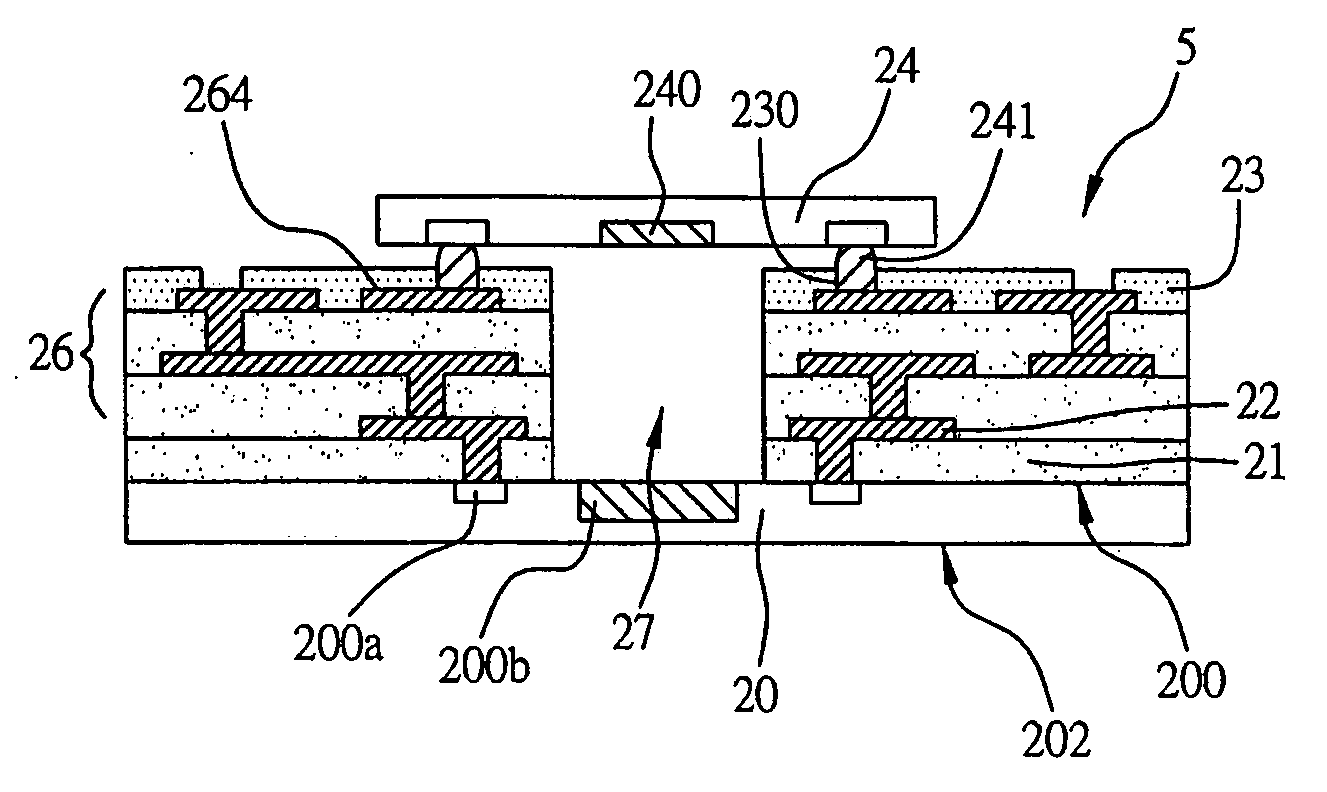Semiconductor device integrated with opto-electric component and method for fabricating the same
a technology of opto-electric components and semiconductors, which is applied in the direction of optical elements, instruments, optical waveguide light guides, etc., can solve the problems of increasing the conductivity, unable to achieve further conductivity, and the inability to increase the signal transmission rate by increasing the conductivity, so as to improve the aligning precision, shorten the conduction path, and reduce the loss of signal transmission
- Summary
- Abstract
- Description
- Claims
- Application Information
AI Technical Summary
Benefits of technology
Problems solved by technology
Method used
Image
Examples
Embodiment Construction
[0037]FIGS. 2A to 2D show the first preferred embodiment's fabrication flowchart of the present invention of the semiconductor device integrated with opto-electric component. Please notice that all the diagrams are simplified schematic diagrams only, and only used to represent the fabrication process of the present invention. Furthermore, the diagrams only show the components relating to the present invention, and the showing components are not in their actual condition when operation; the design of the components' number, shape and size is selective in actual operation and the components can be arranged in a more complex way.
[0038] As shown in FIG. 2A, first a semiconductor wafer 2 with a plurality of optical transmitter / receiver components 20 is provided, each of the optical transmitter / receiver components 20 having an active surface 200 and a non-active surface 202 opposites to the active surface 200, wherein a plurality of connecting pads 200a and an optical active area 200b ar...
PUM
 Login to View More
Login to View More Abstract
Description
Claims
Application Information
 Login to View More
Login to View More - R&D
- Intellectual Property
- Life Sciences
- Materials
- Tech Scout
- Unparalleled Data Quality
- Higher Quality Content
- 60% Fewer Hallucinations
Browse by: Latest US Patents, China's latest patents, Technical Efficacy Thesaurus, Application Domain, Technology Topic, Popular Technical Reports.
© 2025 PatSnap. All rights reserved.Legal|Privacy policy|Modern Slavery Act Transparency Statement|Sitemap|About US| Contact US: help@patsnap.com



